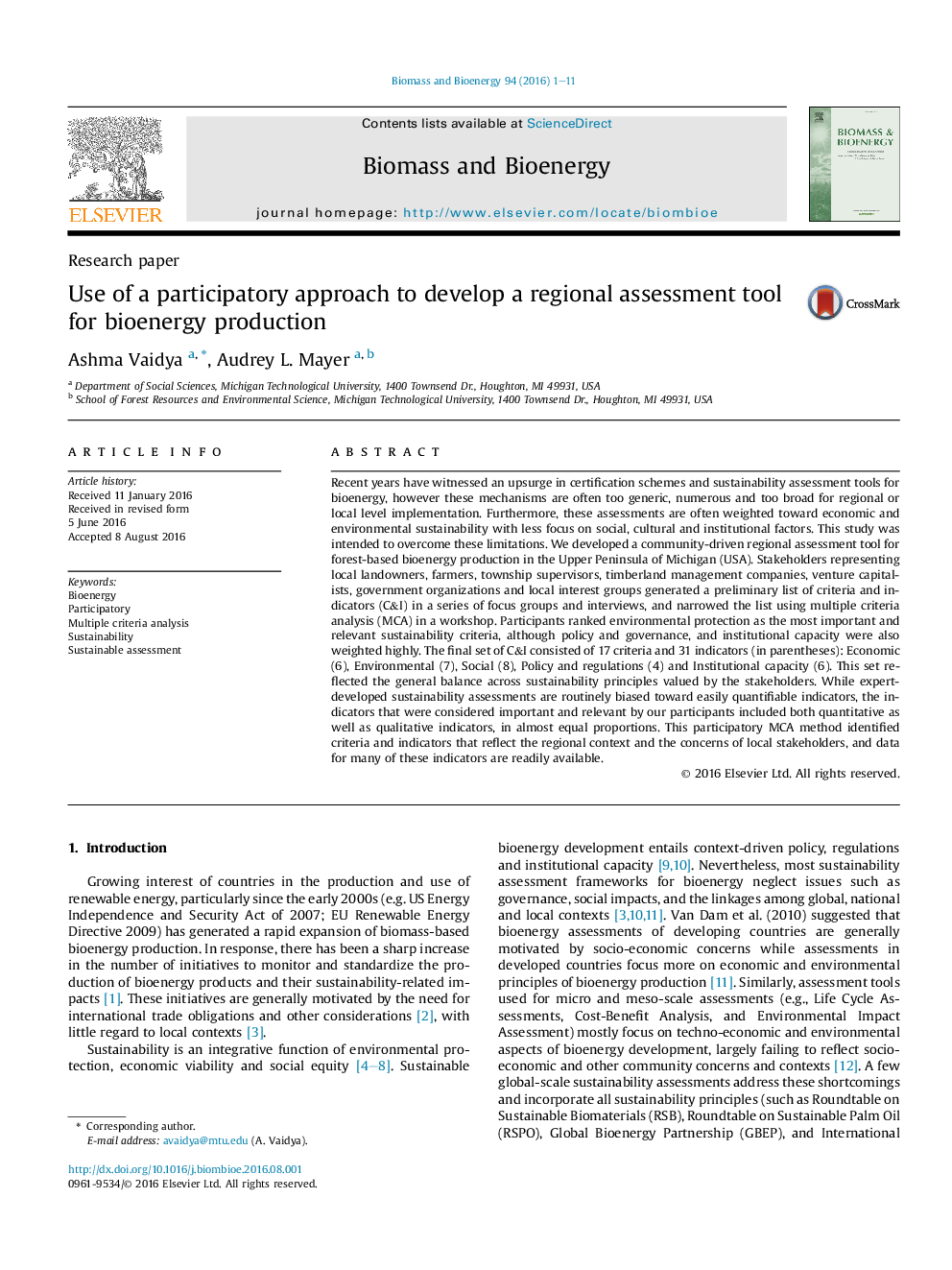| Article ID | Journal | Published Year | Pages | File Type |
|---|---|---|---|---|
| 676682 | Biomass and Bioenergy | 2016 | 11 Pages |
•A regional assessment tool for forest-based bioenergy production was developed.•Study participants include local experts and key stakeholders from Upper Michigan.•Multiple criteria analysis was used to evaluate criteria and indicators (C&I).•The final set of C&I consists of 5 sustainability criteria and 31 indicators.
Recent years have witnessed an upsurge in certification schemes and sustainability assessment tools for bioenergy, however these mechanisms are often too generic, numerous and too broad for regional or local level implementation. Furthermore, these assessments are often weighted toward economic and environmental sustainability with less focus on social, cultural and institutional factors. This study was intended to overcome these limitations. We developed a community-driven regional assessment tool for forest-based bioenergy production in the Upper Peninsula of Michigan (USA). Stakeholders representing local landowners, farmers, township supervisors, timberland management companies, venture capitalists, government organizations and local interest groups generated a preliminary list of criteria and indicators (C&I) in a series of focus groups and interviews, and narrowed the list using multiple criteria analysis (MCA) in a workshop. Participants ranked environmental protection as the most important and relevant sustainability criteria, although policy and governance, and institutional capacity were also weighted highly. The final set of C&I consisted of 17 criteria and 31 indicators (in parentheses): Economic (6), Environmental (7), Social (8), Policy and regulations (4) and Institutional capacity (6). This set reflected the general balance across sustainability principles valued by the stakeholders. While expert-developed sustainability assessments are routinely biased toward easily quantifiable indicators, the indicators that were considered important and relevant by our participants included both quantitative as well as qualitative indicators, in almost equal proportions. This participatory MCA method identified criteria and indicators that reflect the regional context and the concerns of local stakeholders, and data for many of these indicators are readily available.
